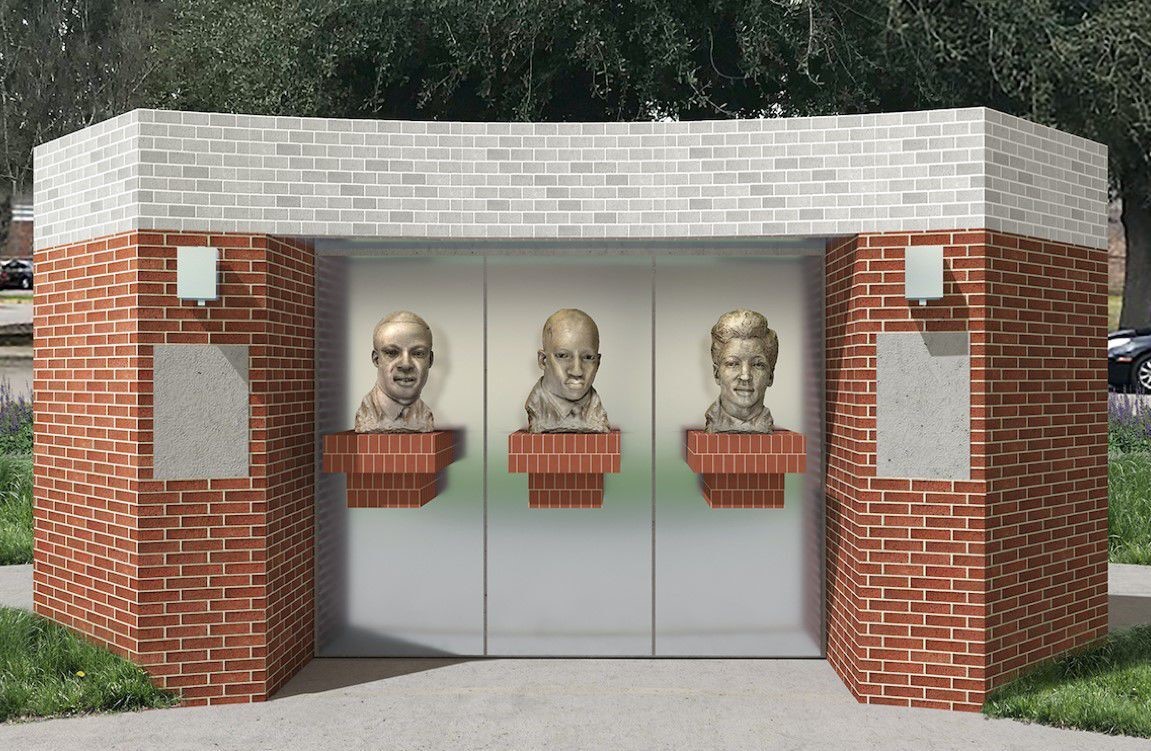Photographer recalls events of Orangeburg 1968
By: SAVANNAH JEFFERSON
Feb 27, 2024

A monument at S.C. State remembers the three students killed on Feb. 8, 1968. From left, the busts are of Samuel Hammond, Delano Middleton and Henry Smith.
Cecil Williams of Orangeburg is known for his photography capturing the civil rights movement in South Carolina.
His
recollections of events such as the Orangeburg Massacre are told in his
photo books and at his civil rights museum in Orangeburg, the only one
of its kind in South Carolina.
Williams spoke to Claflin student
journalists ahead of the anniversary of the Feb. 8, 1968, incident in
which three students were killed and 28 others were injured during a
protest at South Carolina University over segregation at an Orangeburg
bowling alley. It is known as the Orangeburg Massacre.
At the
time, Williams worked as the official photographer for the South
Carolina Branch of the National Association for the Advancement of
Colored People, South Carolina State University and Claflin University.
“I
remember going to a restaurant. They did service me but not with the
greatest of kindness. But overall, the doors had been open for African
Americans to take part in the democratic process and be full citizens in
Orangeburg,” Williams said of changes that were slowly being made in
Orangeburg after the Civil Rights Act of 1964.
"It started on Feb.
6, 1968, at the All-Star Bowling Lanes, which was on Russell Street
about three blocks from South Carolina State and Claflin University,”
Williams said. “Citizens passing by for years had been upset about the
'white only' sign that was right by the sidewalk.”
“John Stroman, a
local student at the time, was one of the individuals interested in
bowling. He had done this for many years and he found out he was not
able to go to the bowling alley in Orangeburg.”
The owner said
this was because the establishment was privately owned, Williams said.
"He had been licensed by the city of Orangeburg to operate a business
and he should have obeyed the laws."
“On Feb. 6, 1968, I received a
phone call that students were at the bowling lanes just after dark
around 7 o’clock,” Williams said.
“I parked my car on Russell
Street and walked over to the bowling alley. I saw that there were
around 52 to maybe 100 students gathered outside.”
Police officers began to gather as well, Williams said, noting there were no African American police.
After
a glass was broken at a nearby business, causing a loud noise, city
police began beating students with their batons, Williams said.
“I began to run,” Williams said of making his way toward his car.
It was then that he saw a woman on the ground being beaten by officers just because she was in the area and had fallen.
Two
days later on Feb. 8, 1968, tensions were high. Students were confined
on the SC State and Claflin campuses and could not go into town.
“The governor, Robert McNair, called in the National Guard, called in the Highway Patrol. There were even tanks in Orangeburg.”
Throughout the night of Feb. 8, law enforcement increased its presence and the entrances to the campuses were blocked off.
“During
the night around 10/10:30, highway patrolmen were ordered by (SLED
Chief) Pete Storm to load their weapons with shotgun shells,” Williams
said.
They approached the students, who "believed that they were
within their rights to protest, and they really believed that they were
being mistreated by not being allowed to go back downtown."
Witnesses
told Williams there were around 30 officers but only nine loaded their
weapons. They moved toward the students and began firing.
Williams
said, “Three students were killed, and I think about 28 injured. There
were many more who were not on the record.” These students decided not
to go to the hospital and to seek private doctors or other healing
methods.
“The cruelty of it was that the highway patrolmen dragged the bodies and collected two of the three bodies,” Williams said.
“When
they dragged two of the bodies ... one of them was still moving, and
they took out their 38 and shot him so he would not even move anymore,”
Williams said he was told.
Williams said the campus seemed
deserted when he arrived the next morning, going to the scene of the
shooting. There he collected spent shotgun shells that became the
subject of an iconic photo. There was not even any police tape marking
the site.
“In my opinion this is a reflection that even in
2024, the disrespect that they give to the African American community.
Color and skin tone in America in 2024 is still a factor that affects
everyone of color,” Williams said.
"We still have a ways to go to really achieve a color-blind society.”